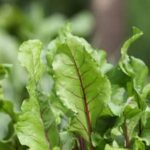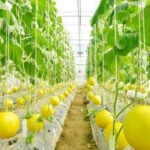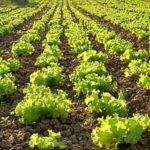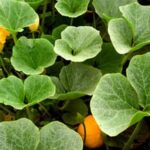Container vegetable gardening in Maine offers a range of benefits for gardeners and plant enthusiasts. With the ability to grow vegetables in containers, individuals can overcome challenges such as limited space or poor soil quality. This section will discuss the advantages of container gardening in Maine and why it has become increasingly popular among both seasoned gardeners and beginners.
Maine’s climate can be harsh, with cold winters and shorter growing seasons. However, container vegetable gardening allows individuals to have more control over their plants’ environment. By using containers, gardeners can start their vegetables indoors before transplanting them outside when the weather warms up. This flexibility extends the growing season and increases the chances of successfully harvesting a variety of vegetables in Maine.
Furthermore, container gardening provides an excellent solution for those with limited yard space. Whether one lives in an apartment or has a small backyard, containers can be placed on patios, balconies, or even window sills. This accessibility makes vegetable gardening possible for individuals who may not have access to traditional raised beds or open ground.
Additionally, container gardens offer the advantage of portability. With containers, gardeners have the flexibility to move their plants around to optimize sunlight exposure throughout the day. This adaptability is particularly important in Maine’s climate since maximizing sunlight is essential for successful vegetable growth.
Overall, container vegetable gardening in Maine presents numerous benefits for both experienced gardeners looking to expand their horticultural endeavors and novices interested in trying their hand at growing fresh produce. In the following sections, we will explore various factors crucial to successful container gardening in Maine’s unique climate.
Choosing the Right Container
When it comes to container vegetable gardening in Maine, choosing the right container is crucial for the success of your garden. The container you select will not only determine the health and growth of your plants, but also how well they can withstand Maine’s unique climate. Consider the following factors when choosing a container for your vegetable garden.
Size and Depth
First and foremost, consider the size and depth of your container. The size should be appropriate for the particular vegetable variety you plan to grow. Keep in mind that larger containers provide more space for roots to grow, leading to healthier and more productive plants. As a general rule of thumb, choose a pot that is at least 12 inches deep and wide for most vegetables.
Material
Consider the material from which the container is made. Common options include plastic, ceramic, terra cotta, wood, and fabric containers. Each material has its advantages and disadvantages. Plastic containers are lightweight and retain moisture well but may not have good insulation properties.
Ceramic and terra cotta containers are aesthetically pleasing but can be heavy and prone to cracking in extreme weather conditions. Wood containers are durable but may need regular maintenance. Fabric containers are lightweight, breathable, and can prevent overwatering by allowing excess water to drain out.
Drainage
Proper drainage is essential for healthy plant growth in container gardening. Make sure the container has drainage holes at the bottom to allow excess water to escape; otherwise, your plants may suffer from root rot or other water-related issues.
Mobility
Consider if you want your containers to be movable or if they will remain in one spot throughout the growing season. If you prefer flexibility or need to move your plants indoors during inclement weather or frosty nights, choose containers with built-in wheels or lightweight options that are easier to lift and transport.
By carefully considering these factors when choosing your containers, you can set a solid foundation for a successful and thriving container vegetable garden in Maine’s climate. Remember to choose containers that suit the needs of your specific vegetables, provide proper drainage, and can withstand the challenges of Maine’s varying weather conditions.
Essential Tools and Supplies
When starting a container vegetable garden in Maine, it is important to gather the essential tools and supplies needed to ensure a successful gardening experience. With the right equipment, gardeners can create an optimal environment for their plants to thrive and produce bountiful harvests.
Containers
The first item on the list of essential tools for container vegetable gardening is, of course, containers themselves. When selecting containers, there are a few factors to consider. Firstly, choose containers that are large enough to accommodate the root systems of your chosen vegetables.
As a general rule of thumb, opt for containers that are at least 12 inches deep and have a capacity of at least 5 gallons. Additionally, ensure that your containers have proper drainage holes to prevent waterlogging.
Quality Potting Mix
Another crucial aspect of container vegetable gardening is selecting the right potting mix. Unlike traditional gardens with natural soil, potted plants rely solely on the potting mix for their nutrients and support. It is recommended to use high-quality potting mixes specifically formulated for container gardening. These mixes are lightweight, well-draining and contain a balanced blend of organic matter and nutrients.
Gardening Tools
In addition to containers and potting mix, you will need a few basic gardening tools to tend to your container vegetable garden in Maine. A watering can or hose with a gentle spray nozzle is necessary for watering your plants without causing damage or disrupting soil structure.
Hand trowels and pruners are handy for planting seeds or seedlings and pruning any dead or damaged plant parts. A small rake or hand cultivator can be useful for maintaining the soil surface by removing weeds and improving air circulation.
Once you have gathered these essential tools and supplies, you will be well-equipped to begin your container vegetable garden in Maine. By ensuring proper drainage in your containers, using quality potting mix, and having the necessary gardening tools, you can create an optimal growing environment for your plants. With these foundational elements in place, you are ready to move on to the next step of selecting the best vegetable varieties for container gardening in Maine.
Selecting the Best Vegetable Varieties for Container Gardening in Maine
When it comes to container vegetable gardening in Maine, selecting the right vegetable varieties is essential for success. Not all vegetables are suitable for growing in containers, especially in Maine’s unique climate. Here are some factors to consider when choosing the best vegetable varieties for your container garden:
Size and Growth Habit
Since container gardens have limited space, it is important to choose vegetable varieties that have a compact growth habit and don’t require significant amounts of space. Look for determinate tomato varieties that stay bushy rather than sprawling, or consider dwarf versions of your favorite vegetables.
Cold Hardiness
Maine’s climate can be harsh, especially during winter months. Therefore, it is important to select vegetable varieties that can tolerate colder temperatures and frost. Opt for cold-hardy vegetables like kale, Brussels sprouts, and certain types of lettuce. These plants will be more resilient during the cooler months and continue to provide you with fresh produce.
Shorter Growing Season
Maine’s shorter growing season requires selecting vegetable varieties that have a shorter maturity time or can be grown as quick-growing crops. Look for early maturing tomatoes, radishes, or salad greens that can be harvested within a relatively short period of time.
Disease Resistance
Certain vegetable varieties are more resistant to common diseases prevalent in Maine’s climate compared to others. Look for disease-resistant varieties when selecting your vegetable seeds or seedlings to minimize the risk of your plants succumbing to common diseases such as blight or powdery mildew.
By keeping these factors in mind when selecting your vegetable varieties, you’ll increase your chances of having a successful container garden in Maine’s climate. Additionally, it is always helpful to research specific variety recommendations from local garden centers or experienced gardeners who have had success with container gardening in the region. In the next section, we will discuss tips for preparing the soil to ensure your container vegetables receive the nutrients they need to thrive.
Preparing the Soil
When it comes to container vegetable gardening in Maine, one of the most important factors to consider is the soil. Since your plants won’t have access to the natural nutrients found in garden soil, it’s crucial to create a nutrient-rich and well-draining potting mix. Here are some tips to help you prepare the soil for your container vegetable garden:
- Choose a high-quality potting mix: Start by selecting a potting mix specifically designed for container gardening. Avoid using garden soil, as it can be too heavy and may not provide adequate drainage. Look for mixes that contain ingredients such as compost, peat moss, vermiculite, or perlite.
- Add organic matter: To enhance the nutrient content of your potting mix, add organic matter such as compost or well-rotted manure. Organic matter improves the water-holding capacity of the soil and provides essential nutrients for plant growth.
- Ensure proper drainage: Good drainage is crucial for preventing waterlogged roots and plant diseases. You can improve drainage within your containers by adding materials like gravel or sand to the bottom of each pot before filling it with potting mix.
- Consider slow-release fertilizers: Container-grown vegetables often require regular feeding since their nutrients can quickly deplete in limited spaces. Consider incorporating slow-release fertilizers into your potting mix to provide an ongoing supply of nutrients throughout the growing season.
To ensure successful growth in Maine’s climate, these soil preparation tips will go a long way in creating an ideal environment for your container vegetable garden. By carefully crafting a nutrient-rich and well-draining potting mix, you’ll give your plants a strong foundation for healthy growth and bountiful harvests.
- Choose a high-quality potting mix
- Add organic matter
- Ensure proper drainage
- Consider slow-release fertilizers
Optimal Placement and Sunlight Exposure for Container Vegetable Gardens in Maine
When it comes to container vegetable gardening in Maine, one of the most crucial factors for success is optimal placement and sunlight exposure. Proper placement of your containers and ensuring they receive adequate sunlight will play a significant role in the growth and productivity of your plants. Here are some tips to help you make the most out of your container vegetable garden in terms of placement and sunlight exposure:
- Location: Choose a location that receives at least six hours of direct sunlight every day. In Maine, where the growing season is relatively shorter, maximizing sun exposure is essential for the proper development of your vegetable plants. Look for a spot that is not obstructed by tall structures or trees that may cast shadows.
- South-facing Position: If possible, place your containers in a south-facing position to take advantage of maximum sun exposure throughout the day. This orientation allows the plants to receive abundant sunlight as the sun moves from east to west.
- Shady Afternoons: While ample sunlight is crucial for plant growth, it’s also important to consider the intensity of afternoon sun during hot summer months in Maine. If your containers will be exposed to intense afternoon heat, providing some shade during those peak hours can help prevent overheating and wilting of your plants.
To ensure optimal placement and light exposure for your containers, here’s a quick checklist:
– Assess potential areas for your container vegetable garden based on their sun exposure levels.
– Observe these areas at different times of the day to determine which ones receive direct sunlight for at least six hours.
– Take note of any potential obstacles such as buildings or trees that could cast shadows on your containers.
– Consider using shade cloth or moving containers temporarily during intense afternoon heatwaves.
By following these tips for optimal placement and sunlight exposure, you can provide an ideal growing environment for your container vegetable garden in Maine and maximize its productivity throughout the growing season.
Watering and Fertilizing
Proper watering and fertilizing are essential for the success of your container vegetable garden in Maine. In this section, we will discuss the best practices for maintaining proper moisture levels and providing adequate nutrients to your plants. By following these tips, you can ensure that your vegetables thrive and produce a bountiful harvest.
Watering Guidelines
1. Consistent Moisture: Container gardens require more frequent watering compared to traditional garden beds. The smaller volume of soil in containers dries out quickly, especially during hot summer days. Regularly check the soil moisture by inserting your finger about an inch deep into the potting mix. If it feels dry at this depth, it’s time to water.
2. Deep Watering: When you do water your plants, make sure to apply water deeply so that it reaches the root zone. Shallow watering can lead to shallow root growth and weak plants. To achieve deep watering, pour water onto the soil surface until you see it coming out of the drainage holes at the bottom of the container.
3. Avoid Overwatering: While it’s important not to underwater, overwatering can be equally detrimental. Excess moisture can lead to root rot and other diseases. Ensure that your containers have sufficient drainage holes to allow excess water to escape. If you notice standing water in the container after watering, reduce the amount of water given next time.
Fertilizing Tips
1. Balanced Fertilizer: Vegetables require a steady supply of nutrients for healthy growth and abundant yields. Choose a balanced fertilizer specifically formulated for vegetables or use organic alternatives such as compost or well-rotted manure.
2. Follow Instructions: Read and follow the instructions on the fertilizer package carefully, as different products require different application rates and timings.
3. Regular Feeding: To provide a constant supply of nutrients, feed your plants regularly throughout their growing season. This can be done every two to three weeks, or as recommended by the fertilizer manufacturer.
4. Foliar Feeding: In addition to root applications, foliar feeding can be beneficial for container vegetable plants. Spray a diluted liquid fertilizer on the leaves, allowing them to absorb nutrients directly.
By following these watering and fertilizing guidelines, you’ll ensure that your container vegetables in Maine receive the moisture and nutrients they need to thrive. Keep in mind that each plant may have specific requirements, so it’s important to research the individual needs of your chosen vegetable varieties. With proper care, you’ll be rewarded with healthy and productive plants that yield delicious vegetables all season long.
Container Vegetable Gardening Maintenance
Maintaining a container vegetable garden in Maine not only requires regular watering and fertilizing, but also careful attention to pest control and disease prevention. Pests such as aphids, slugs, and caterpillars can quickly invade your plants and destroy all of your hard work. To keep these pests at bay, there are several methods you can employ.
One effective way to control pests in your container garden is by using natural predators. Ladybugs and praying mantises are great allies in the fight against pests. You can attract these beneficial insects to your garden by planting companion flowers such as marigolds or dill. Additionally, introducing nematodes to the soil can help control harmful insects without harming beneficial ones.
Disease prevention is another important aspect of maintaining a healthy container vegetable garden. Fungal diseases like powdery mildew and blight are common in Maine’s humid climate. To prevent these diseases, make sure to provide good airflow around your plants by spacing them adequately and avoiding overcrowding. Avoid overhead watering as it can create favorable conditions for fungal growth-instead, use a soaker hose or watering directly at the base of the plant.
When it comes to harvesting your vegetables, timing is crucial for optimal flavor and texture. Different vegetables have different indicators that they are ready for harvest-such as color changes or firmness-and it is important to familiarize yourself with these specifics for each vegetable variety you are growing. As a general rule of thumb, pick vegetables when they are at their peak ripeness but before they become overmature.
By taking proper care of pest control and disease prevention while mastering the art of harvesting at the right time, you will be well on your way to enjoying an abundant harvest from your container vegetable garden in Maine.
Extending the Growing Season
Container vegetable gardening in Maine can be a challenge due to the relatively shorter growing season compared to other regions. However, with the right techniques and strategies, it is possible to extend the growing season and maximize your harvest. Here are some effective methods for overcoming Maine’s shorter growing period:
- Using Season Extenders: Season extenders such as row covers, cold frames, and hoop houses are invaluable tools for stretching the growing season in Maine. These structures help protect plants from frost and provide additional warmth, allowing you to start planting earlier in the spring and continue harvesting later into the fall. Consider investing in these season extenders and learn how to properly use them to optimize their benefits.
- Planting Cold-Tolerant Vegetables: Another way to overcome Maine’s shorter growing season is by choosing cold-tolerant vegetable varieties that can withstand cooler temperatures. Some examples of cold-hardy crops include leafy greens like kale, spinach, and lettuce, as well as root vegetables like carrots, beets, and radishes. These vegetables can be planted early in the season and can also withstand light frosts, giving you a head start on your garden.
- Utilizing Raised Beds: Raised beds can provide several advantages when it comes to extending the growing season in Maine. The elevated soil warms up faster in the spring, allowing you to start planting earlier than traditional ground-level gardens. Additionally, raised beds have better drainage, which prevents waterlogged soil that can hinder plant growth during cooler periods. By utilizing raised beds and optimizing their benefits, you can effectively lengthen your growing season.
By implementing these techniques for extending the growing season in Maine’s container vegetable gardens, you can enjoy a bountiful harvest even during shorter periods of optimal growth. Remember to adapt your gardening practices according to your specific climate conditions and experiment with different strategies to find what works best for your container garden.
| Technique | Description |
|---|---|
| Season Extenders | Investing in row covers, cold frames, and hoop houses to protect plants from frost and provide additional warmth. |
| Cold-Tolerant Vegetables | Choosing vegetable varieties that can withstand cooler temperatures such as kale, spinach, lettuce, carrots, beets, and radishes. |
| Raised Beds | Utilizing raised beds that warm up faster in the spring and have better drainage compared to ground-level gardens. |
Success Stories and Tips from Experienced Container Vegetable Gardeners in Maine
Maintaining a successful container vegetable garden requires knowledge of the specific challenges and techniques that are unique to gardening in Maine. Thankfully, there are many experienced container gardeners in the state who have developed their own tips and strategies for achieving impressive results. Here are some success stories and valuable tips from these seasoned gardeners:
Jerry’s Success with Tomatoes
Jerry, a resident of Portland, has mastered the art of growing tomatoes in containers. He recommends using large pots (at least 20 inches in diameter) that can provide ample space for root growth. Jerry also advises selecting determinate tomato varieties, as they tend to have a shorter growing period which suits Maine’s climate better. He emphasizes the importance of regular pruning, proper staking or caging, and consistent watering to prevent diseases like blight.
Sarah’s Tips for Cucumbers
Sarah, who lives in Augusta, has had great success with growing cucumbers in containers on her balcony. She suggests using compact varieties such as ‘Bush Pickle’ or ‘Patio Snacker’, which take up less space while still producing abundant fruits. Sarah also stresses the significance of providing good support for cucumber vines to prevent them from sprawling all over the place. Additionally, she recommends hand-pollinating the flowers using a small brush or cotton swab to ensure high fruit production.
John’s Advice on Overwintering Plants
John, an avid gardener from Bangor, successfully overwinters plants like herbs and lettuce in his container garden by utilizing cold frames. He explains that by surrounding his containers with wooden frames covered with clear plastic or glass, he is able to protect the plants from frost and extend their growing season.
John advises placing the containers near a south-facing wall or in a sunny location to maximize sunlight exposure during the winter months. He also suggests insulating the pots with straw or bubble wrap for added protection.
| Experienced Gardener | Tips and Successes |
|---|---|
| Jerry | Successfully grows tomatoes in large pots, recommends determinate varieties, emphasizes pruning and consistent watering to prevent diseases like blight. |
| Sarah | Grows cucumbers in compact varieties in containers on her balcony, provides good support for vines, hand-pollinates flowers for high fruit production. |
| John | Overwinters herbs and lettuce using cold frames – wooden frames covered with clear plastic or glass, maximizes sunlight exposure by placing containers near south-facing wall, insulates pots with straw or bubble wrap. |
Conclusion
In conclusion, container vegetable gardening in Maine can be a rewarding and fruitful endeavor. By choosing the right containers, selecting the best vegetable varieties, preparing nutrient-rich soil, optimizing placement and sunlight exposure, maintaining proper moisture levels, and implementing pest control and disease prevention techniques, you can enjoy a bountiful harvest of fresh vegetables.
Although Maine’s shorter growing season may present some challenges, there are techniques that can be employed to extend the season. From using cold frames and row covers to starting seeds indoors and utilizing heat-loving plants like tomatoes and peppers, experienced container gardeners in Maine have found success in overcoming these obstacles.
It is important to note that every gardener’s experience will vary depending on factors such as location, climate conditions, and individual care practices. Therefore, it is recommended to consult local gardening resources or seek advice from experienced container gardeners in your area for personalized tips and recommendations.
By putting in the time and effort necessary for successful container vegetable gardening in Maine, you will be rewarded with an abundance of fresh produce that you can enjoy throughout the season. Whether you are a beginner or an experienced gardener looking to optimize your limited space, container gardening offers a versatile solution for growing vegetables in urban areas or where traditional gardens may not be feasible.
So go ahead and get started on your own container vegetable garden – soon enough, you’ll be enjoying the fruits of your labor.

If you’re looking to get into vegetable gardening, or are just looking for some tips on how to make your current garden better, then you’ve come to the right place! My name is Ethel and I have been gardening for years. In this blog, I’m going to share with you some of my best tips on how to create a successful vegetable garden.





